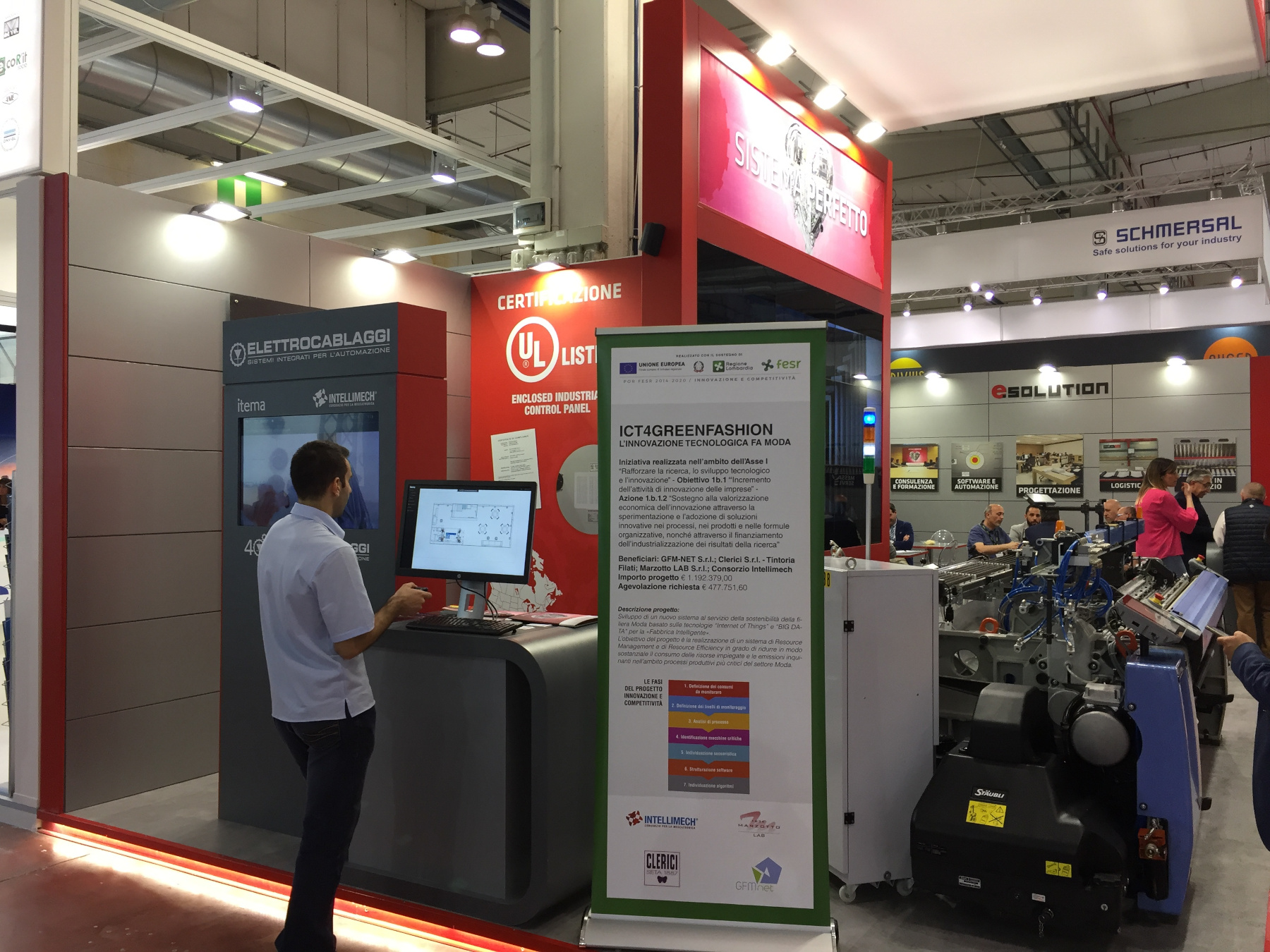Is it possible to combine Fashion, Big Data, and Sustainability?
The answer is yes!
This is demonstrated by ICT4GreenFashion, the project funded by the Lombardy Region and aimed at energy monitoring in Industry 4.0, which we carried out with Consorzio Intellimech for the pilot companies Marzotto Lab - Sondrio Fabrics Division and Clerici Tintoria Filati.
AN IDEA MORE RELEVANT THAN EVER
Today, with the arrival of the energy crisis generated by the conflict in Ukraine and the looming climate change, it becomes almost obvious for every production sector to aim at decreasing consumption: not only for economic saving but also to get to reduce emissions and the use of fossil fuels.
When we implemented a new system to improve the sustainability of production processes in the Fashion industry in 2018, the industry's focus was almost exclusively on logistics and social impacts related to delocalized production. What's more, the Fashion industry has always been characterized by the presence of numerous small/medium enterprises, with a structure oriented toward the production of "customized" and high-end products, but a low propensity to use ICT technologies.Designing for the Fashion supply chain a new system to serve sustainability, with significant improvements in the most environmentally critical production processes, was an exciting challenge!
HOW ICT4GreenFashion WORKS
Working side by side with Intellimech, we created a system based on flexible processing mechanisms applied to a data collection platform from industrial machinery.
After analysing several possible solutions, we landed on the best configuration to meet this challenge: the Apache Hbase database, an open source modelled on Google Bigtable; Docker containers and microservices architecture in order to make the solution scalable; Kafka to enable communication between microservices and allow real-time data processing; and the Angular framework, ideal for the development of front-end Web applications.
To reach an optimization in data management and analysis, we chose the best algorithms according to the target context. The methodological approach we have developed is designed to be usable in other industrial contexts and different phases of work and provides the possibility to scale the activity on different dimensions.
Specifically, ICT4GreenFashion allows us to:
- evaluate data in real-time;
- build customizable reporting to detect unexpected phenomena in a timely manner;
- make use of Big Data to store a greater amount of information and observe/study phenomena with more reliable statistical validity.
THE RESULT? LESS ENERGY CONSUMPTION, MORE BRAND EQUITY
In a sector such as textiles and fashion, which is characterized by a large presence of competitors, better management of energy and raw materials allows for a reduction in consumption and therefore economic savings, decisively affecting the competitiveness of the company. To give you an idea: the two companies in the pilot project - Clerici Tintoria Filati and Marzotto Lab - Sondrio's Fabrics Division - immediately benefited from a system with potential for consumption savings of up to 20 percent and cost reductions of up to 6-9 percent.
But the benefits do not stop there. As we know, reducing energy consumption also plays a key role from a social and corporate brand communication point of view, which can differentiate itself on the market from competitors. This is even more true in a sector like Fashion, which must respond to the demands of a consumer who is increasingly sensitive to issues of respect and environmental protection.
Last but not least: in addition to the development of a state-of-the-art technological infrastructure, our project has also enabled the generation of new skills within the organizations involved. The foundations have been laid for the development of new professional figures capable of "connecting" the circular economy and energy management with the technological issues most typical of Industry 4.0, such as Big Data and IoT. And this, in an industry made up of non-standardizable processes and customized machinery, is no small advantage.
